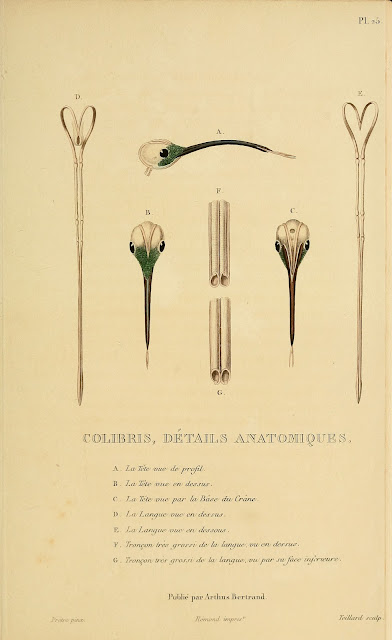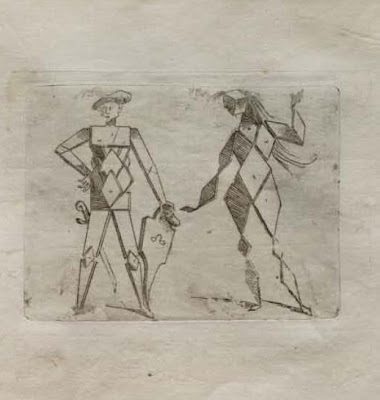 |
| A male "ruby topaz" specimen from New Guinea |
Original title for this codex is "Histoire naturelle des colibris : suivie d'un supplément à l'Histoire naturelle des oiseaux-mouches : ouvrage orné de planches dessinées et gravées par les meilleurs artistes : et dédié A.M. le Baron Cuvier".
Author was René Primevère Lesson (1794-1849), a French surgeon, naturalist, and ornithologist, who served as pharmacist and botanist on Duperrey's round-the-world voyage of La Coquille (1822–1825). During this trip, was the first naturalist to see live birds of paradise in the Moluccas and New Guinea. On returning to Paris, he spent seven years preparing the vertebrate zoological section of the official account of the expedition "Voyage au tour du monde sur La Coquille (1826–39)". Very prolific author, he also produced Manuel d'Ornithologie (1828), Traité d'Ornithologie (1831), Centurie Zoologique (1830–32) and Illustrations de Zoologie (1832–35), several monographs on hummingbirds, and one book on birds of paradise. Lesson received the Légion d'honneur in 1847 (Established by Napoleon Bonaparte, this is the highest decoration in France).
I found a web page (link here) that offers a facsimil edition of Duperrey's round-the-world voyage of La Coquille.
For a high resolution, pdf version of this manuscript, contact me (facsimilium AT gmail DOT com).
For a high resolution, pdf version of this manuscript, contact me (facsimilium AT gmail DOT com).









